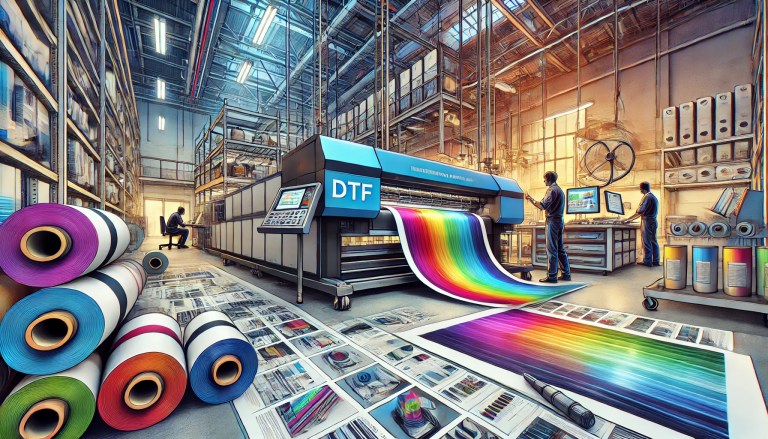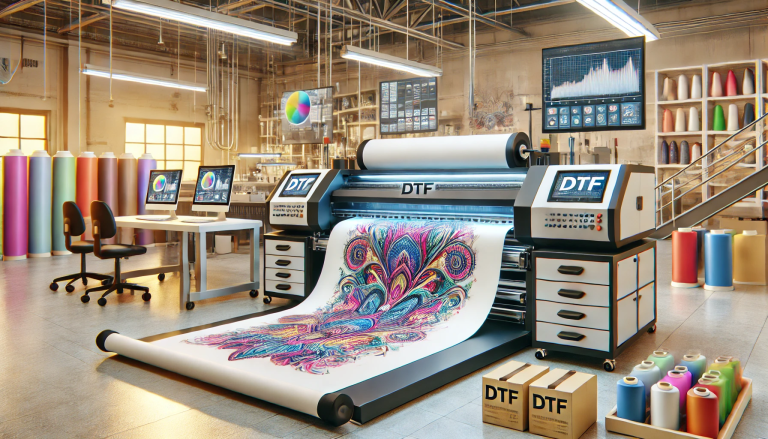“Exploring the Feasibility of Using DTF Film in a Sublimation Printer” -MAXDTF- China UV DTF Transfer AB Decal, China Direct Transfer UV DTF Decal, Made in China
In the world of modern printing technology, both direct-to-film (DTF) and sublimation printing have gained significant popularity for their impressive results and versatility. But what happens when these two techniques collide? Can you use DTF film in a sublimation printer? In this blog post, we’ll dive into this intriguing question and explore the potential feasibility and outcomes of such an endeavor.
Understanding DTF Printing and Sublimation Printing
Before we delve into the compatibility of these two printing techniques, let’s briefly understand what each of them entails:
- DTF Printing: Direct-to-film (DTF) printing is a method where designs are printed directly onto a specialized transfer film, typically using a DTF printer with the appropriate ink. Once the design is printed on the film, it is transferred onto a garment using heat and pressure. DTF printing allows for vibrant and detailed designs on various textiles, including cotton and dark-colored fabrics.
- Sublimation Printing: Sublimation printing involves transferring dye onto a substrate, usually a polyester fabric or coated item, by applying heat and pressure. The dye turns into gas from a solid state, bypassing the liquid stage, and fuses with the fibers of the substrate. This results in vibrant, durable, and long-lasting prints that don’t sit on top of the fabric but become a part of it.
Compatibility of DTF Film with Sublimation Printing
While DTF and sublimation printing are distinct methods with their unique characteristics, the question arises whether it’s possible to use DTF film in a sublimation printer. Unfortunately, this combination is not recommended due to fundamental differences in the printing processes.
Sublimation printing relies on the unique properties of sublimation inks, which transition directly from a solid to a gas under heat and pressure. The gaseous ink then permeates the polyester fibers, resulting in a permanent and vivid print. DTF printing, on the other hand, employs specific inks designed for the film-to-garment transfer process. These inks are not formulated to sublimate in the same way as traditional sublimation inks.
Attempting to use DTF film with a sublimation printer could lead to various issues:
- Ink Compatibility: Sublimation inks may not adhere properly to the DTF film, affecting print quality and durability.
- Transfer Process: Sublimation requires precise heat and pressure settings, which might differ significantly from those required for DTF transfer. This mismatch could lead to unsuccessful transfers or damaged equipment.
- Color Vibrancy and Longevity: Sublimation inks are optimized for polyester and achieve their best results on such materials. Using DTF film might compromise the vibrancy and longevity of the prints.
- Potential Damage: DTF films are not designed to withstand the heat and pressure levels used in sublimation printing. This could lead to damage to both the film and the sublimation printer.
Conclusion
In the quest to achieve the best possible results from printing technologies, it’s essential to understand the limitations and capabilities of each method. While DTF and sublimation printing offer outstanding results in their respective domains, attempting to combine them by using DTF film in a sublimation printer is not recommended due to the fundamental differences in ink formulations, transfer processes, and substrate compatibility.
If you’re looking to explore the benefits of both DTF and sublimation printing, it’s best to invest in dedicated equipment for each method. This ensures that you achieve the high-quality, vibrant prints that both techniques are known for, without compromising on results or equipment integrity.




